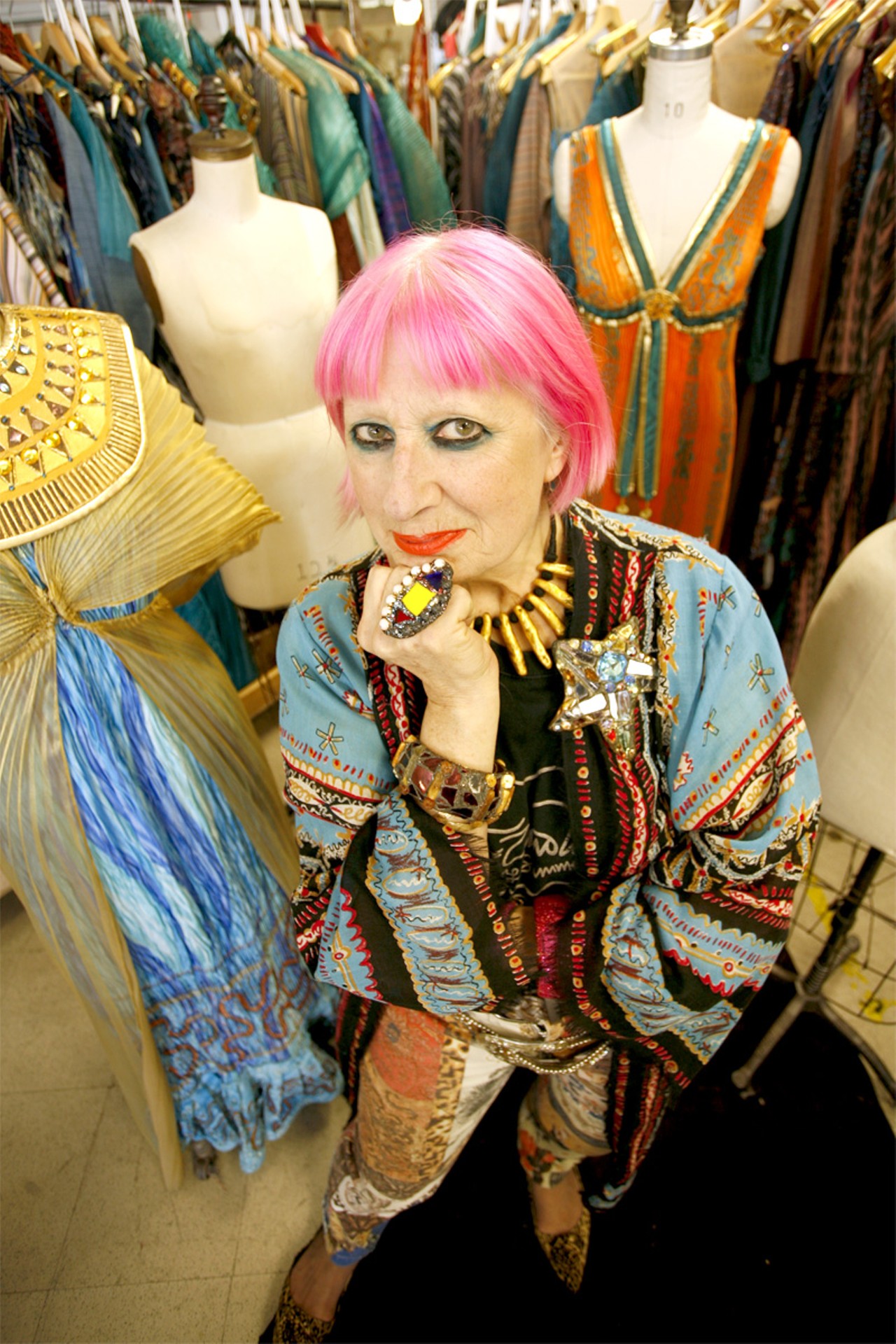Zandra Rhodes’ Approach to “Egyptian” Opera
This article explores the creative process designing for opera, showing British fashion designer Dame Zandra Rhodes’ original and stunning take on Ancient Egyptian imagery, along with her singular imprint as a contemporary designer. For those not familiar with this icon of British design, Zandra’s clients have included Princess Diana, Bianca Jagger, Diana Ross, Sarah Jessica Parker, Elizabeth Taylor and Freddie Mercury of the band Queen. Zandra began her professional career in the 1960s, designing textiles for Heal’s (famous 200-year-old furnishing store in London). Her hand silk-screened designs morphed into a unique clothing line that showcased her textiles and ever since, she has produced two fashion collections per year, amongst many other design projects, such as handbags, shoes, and dinner plates. Her niche, I would say, is performance wear: theatre, dance, red carpet, and opera. In fact her proudest achievement to date is designing for opera – something very few fashion designers accomplish. Why is that? What is so appealing about designing for opera? What is challenging about it?
“Zandra’s proudest achievement to date is designing for opera – something very few fashion designers accomplish.”
Zandra’s career took her to New York from the 1970s on, and there she met an Egyptian American studio magnate who became her life partner. When he retired to the beach town of Del Mar in Southern California, Zandra began her bi-continental lifestyle which informed her recent work. She is represented in the permanent collections of many major art and design museums on both sides of the Atlantic, and founded a museum in Bermondsey, London, in 2003: The Fashion and Textile Museum. Zandra has traveled all over the world, and never stops sketching with her brightly colored watercolor pens. Her in-situ drawings inform her work to the extent that we can see influences in many of her collections, for instance, her Secrets of the Nile collection from 1986 shows many of the Egyptian motifs we later see in Aida.
The following is extracted from an interview by British photographer Dawn Bowery (2013):
It was my mother who introduced me to the world of fashion. She had been a fitter in the Paris House of Worth before the war and taught at Medway College of Art. She was always draping on a dress form at home and there were French magazines everywhere. I first went to Medway College then to the Royal College of Art in London to study printed textile design. When I graduated in 1964 it was a key moment in 20th Century. fashion. Designers at the time included Mary Quant, Foale & Tuffin, Barbara Hulanicki (BIBA), and Jean Muir – all saying goodbye to conservative tastes. But my print designs were too daring for the British manufacturers so I decided to produce them myself while teaching part-time. A fellow teacher named Sylvia Ayton worked with me to produce garments in my prints for our own boutique: The Fulham Road Clothes Shop. This helped with an initial investment of £1,000 from Vanessa Redgrave. [1]
Moving to the 21st Century, the San Diego Opera invited Zandra to design The Magic Flute and following that success in 2001, The Pearl Fishers in 2004. Designers of opera are expected to design for both the sets and the costumes – unlike in film, (except for those we can count on one hand, such as Catherine Martin and Marcel Vertes, extraordinarily both of whom received Oscars for both costume and sets for two different Moulin Rouge productions – almost 50 years apart.) In 2007 Zandra designed Aida for the Houston Grand Opera, her third opera, and her colorful designer’s eye referenced her own Egyptian-style collection from 1986. Aida travelled to the English National Opera and to San Francisco Opera. In 2014 it was revived at San Diego Opera. Verdi’s Aida in four acts was originally commissioned by Ismail Pasha, Khedive of Egypt to celebrate the opening of the Suez Canal in 1869. It premiered there in 1871 and was instantly successful. In 1892 it traveled to La Scala, Milan, under the direction of Verdi, where it was also a smash hit.
The story is set in the time of the Pharaohs in Memphis and Thebes. It has the usual operatic components of hidden identities and unrequited love, along with a sacrifice to Isis, war, and magnificent temples. Aida was an Ethiopian slave to a princess, Amneris, daughter of the King of Egypt, but Aida was also secretly an Ethiopian princess (but of course!)
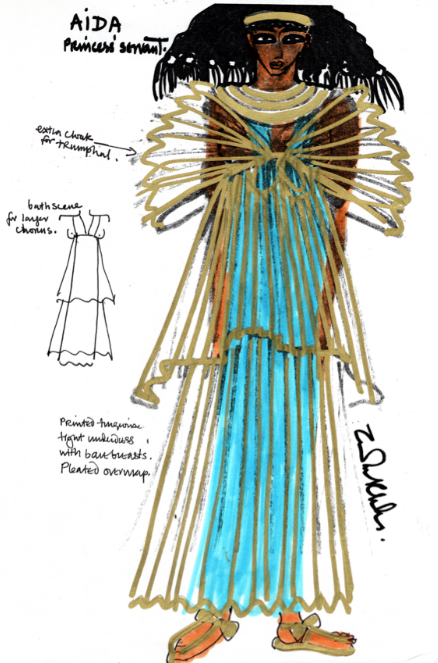
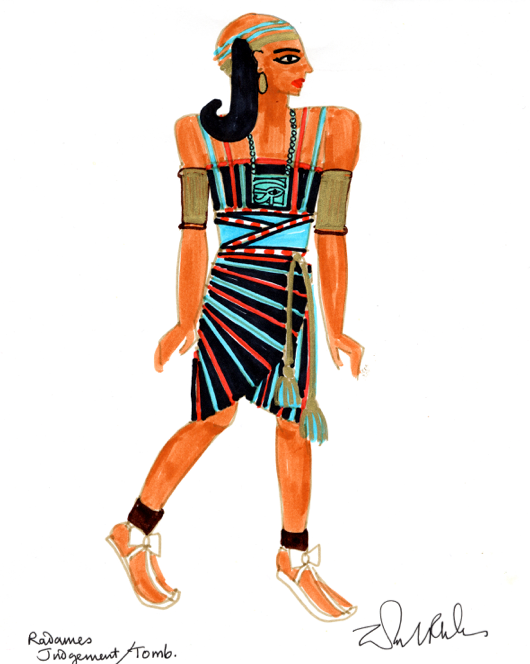
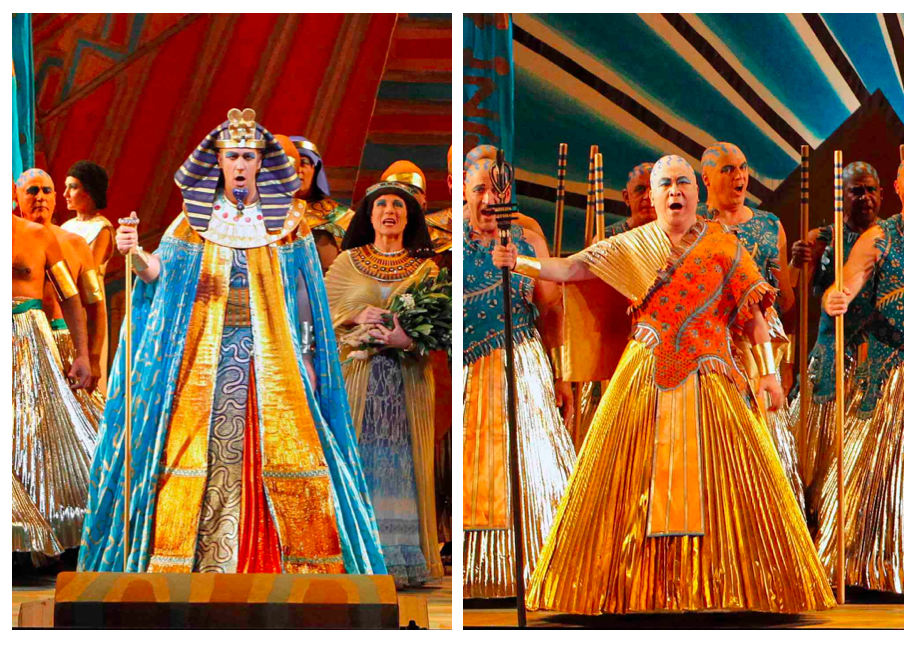
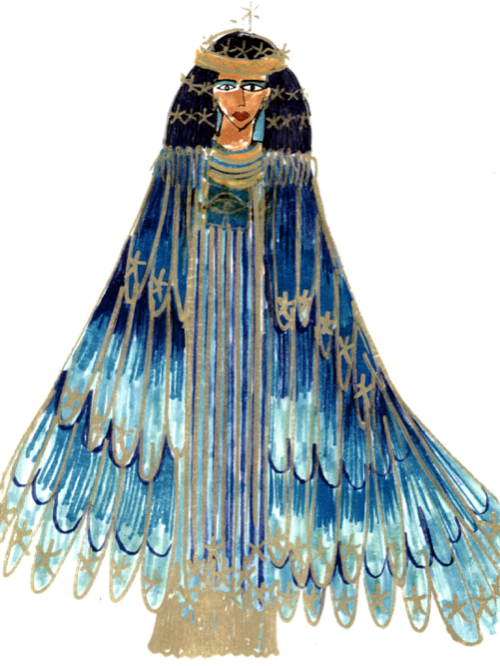

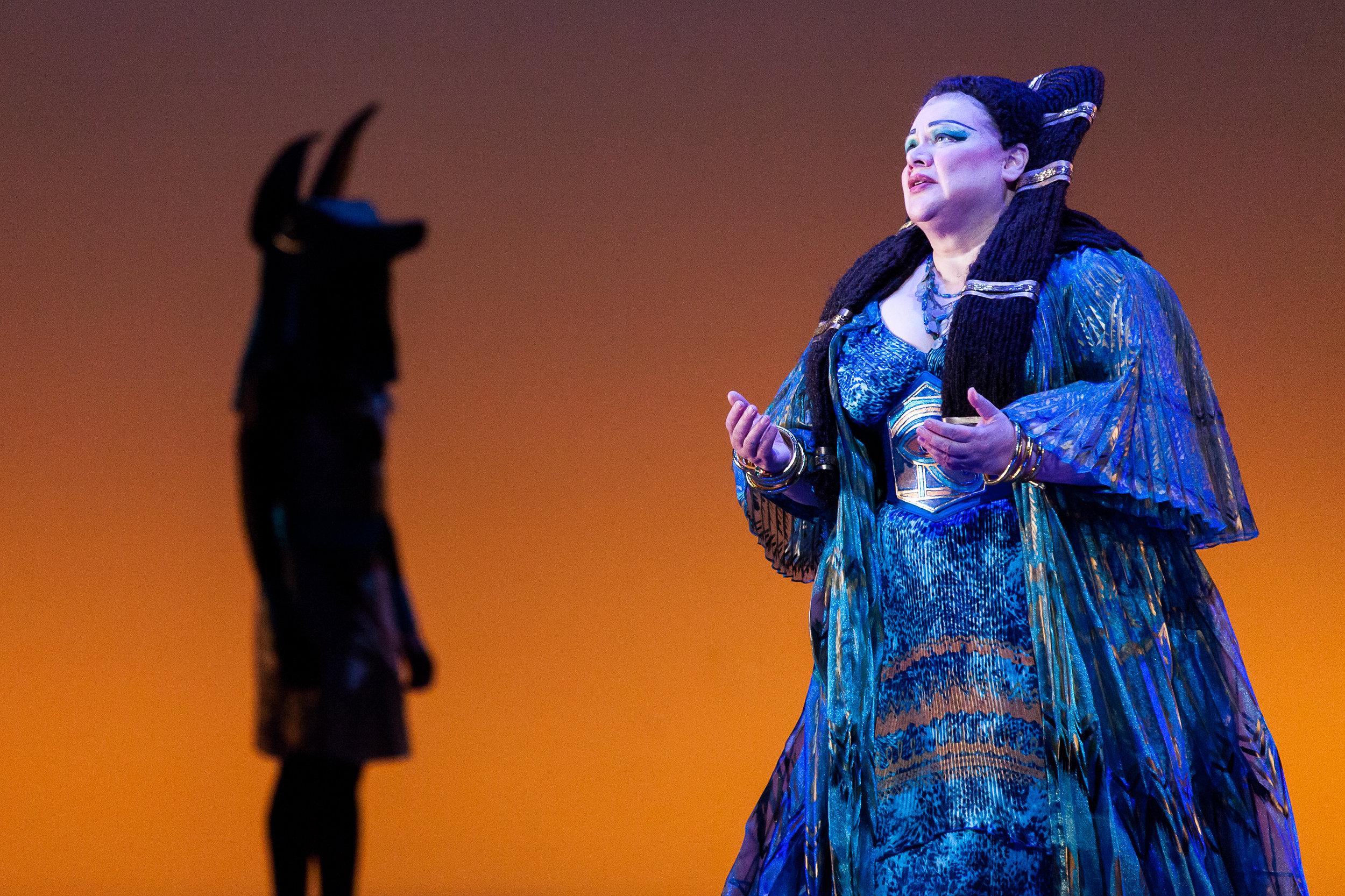

Ancient Egyptian depictions do show the use of bright colors and we know that they did have very intense dye colors. According to Pliny the Elder, in "Book 35" of his Natural History (an early encyclopedia in Latin), the Egyptians dyed their clothes by saturating the fabric with mordants before plunging it into a cauldron of boiling dye. They probably used alum as the mordant.
Zandra searched long and hard for the right fabrics to use, at one point, she even considered sari fabric. She needed something that would take her surface decoration, and yet there were many technical considerations, some of which were peculiar to opera, (for Zandra had designed theater and dance costume before).
In a mini-documentary produced by KPBS News for the San Diego Opera (April 19, 2013), Zandra expresses her wonder at every aspect coming together:
The best part is seeing the whole thing when it’s on stage – the combinations of music and color - you can’t really see that in the costume sketches and the preliminary set designs. But it takes a lot to get to that point. You’ve got the original concept of the draw, then you start to make it take shape with materials. Then, for me, what will I do with it? Will I paint on it? Will I make a special design for a particular costume? …We go to fabric shops and say, “Would this be right if we dyed it? … ” Does it really shine nicely? Can I print or paint on it?” You’ve got to work out the trim – on stage will the key guy offset against the lead singer? You have to look at each group as relating to the lead singer. There are things most people don’t think about. For instance, you have to make sure their ears aren’t covered. And – no matter how exotic the costume — they must always be able to see the conductor. You have to think constantly of character and design. It takes about three years for the process to get from initial sketches, to concert, to the stage. [2]
I believe what’s remarkable in Zandra’s design for opera is the fact that she has managed to continue her development as an artist, and found an outlet in what many consider to be the supreme exposition of western culture, the opera. It is interesting to note that the opportunity presented itself in Southern California, where she is considered an exotic foreign designer. Also, while most theatre designers today have trained as theatre designers, many significant designers are usually fine artists, not textile or fashion designers. Witness David Hockney, another British transplant to Southern California, who also designed for the opera, The Rakes’ Progress. His work shows a similar vibrancy and love of color. If ever you have a chance to see a revival of Zandra’s Aida – don’t miss it for it’s blazing color and striking design.
Notes
[1] Dawn Bowery, California Dreaming: Real Life Stories of Brits in L.A. (Dawn Bowery, 2014).
[2] KPBS News (YouTube), "Behind the Scenes of San Diego Opera's Aida" (April 19, 2013).

